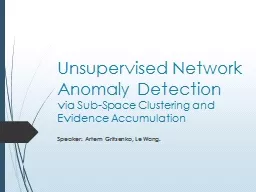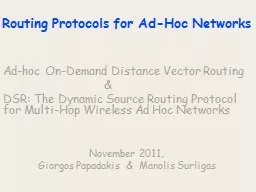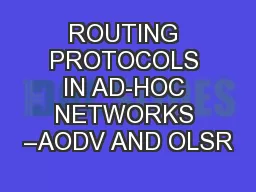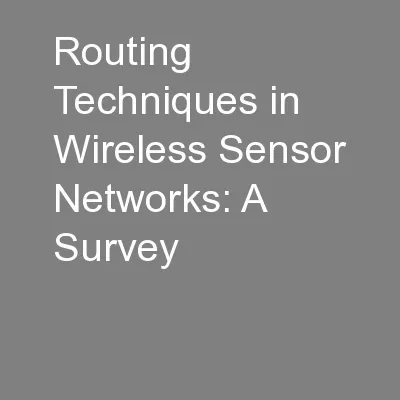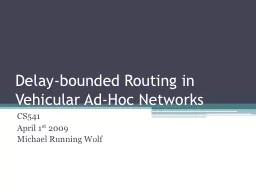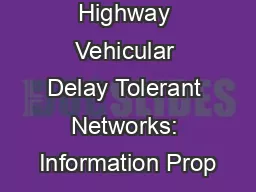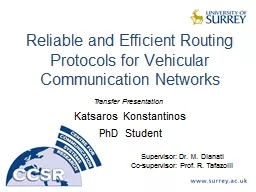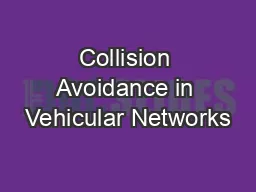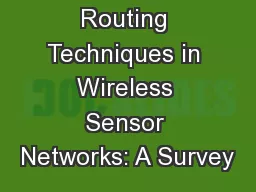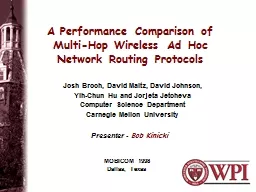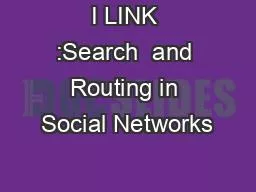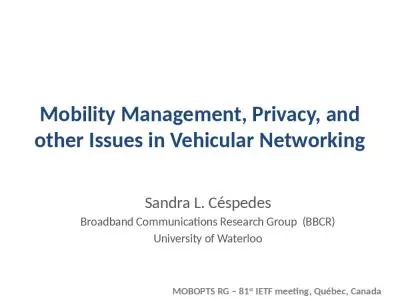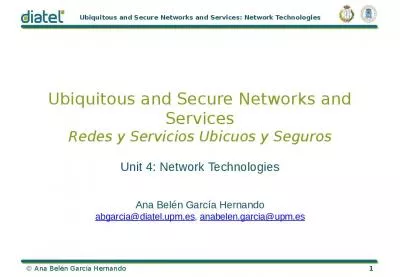PPT-Routing in Vehicular Ad Hoc Networks: A Survey
Author : sherrill-nordquist | Published Date : 2018-11-07
F an Li Yu Wang IEEE Vehicular Technology Magazine June 2007 Speaker Le Wang Outline 1 Motivation and overview 2 Routing Protocols Ad Hoc Routing PositionBased
Presentation Embed Code
Download Presentation
Download Presentation The PPT/PDF document "Routing in Vehicular Ad Hoc Networks: A ..." is the property of its rightful owner. Permission is granted to download and print the materials on this website for personal, non-commercial use only, and to display it on your personal computer provided you do not modify the materials and that you retain all copyright notices contained in the materials. By downloading content from our website, you accept the terms of this agreement.
Routing in Vehicular Ad Hoc Networks: A Survey: Transcript
Download Rules Of Document
"Routing in Vehicular Ad Hoc Networks: A Survey"The content belongs to its owner. You may download and print it for personal use, without modification, and keep all copyright notices. By downloading, you agree to these terms.
Related Documents

